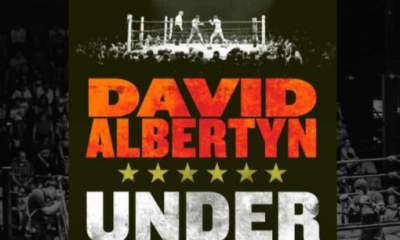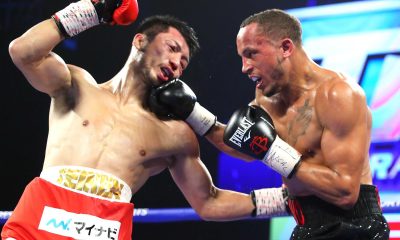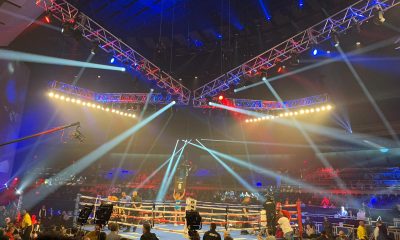Canada and USA
Oscar De La Hoya: Crossing The Bridge into a New Era of Boxing in Las Vegas
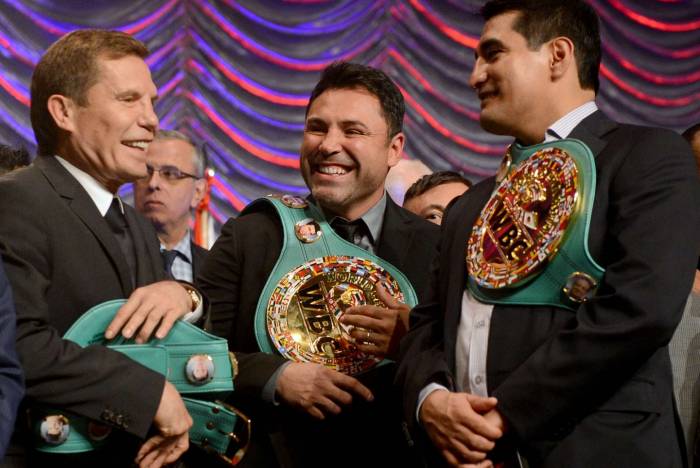
Mexican superstar Canelo Alvarez and British invader Amir Khan clash on Saturday, May 7, at the new T-Mobile Arena in Las Vegas. Had the fight been kicked back a month, it would have fallen on the 20th anniversary of Oscar De La Hoya’s first mega-fight. On June 7, 1996, the Golden Boy turned away Mexican icon Julio Cesar Chavez before a capacity crowd in the outdoor arena at Caesars Palace. De La Hoya already had a slew of big fights under his belt, but this fight, with Chavez’s WBC 140-pound title at stake, took his career to a new level.
This was the last outdoor mega-fight on the Las Vegas Strip – not the last outdoor fight and hardly the last mega-fight, but the last convergence of these two components. The celebrity-studded crowd numbered 15,283. The credentialed media, reportedly 1,500, was said to be the largest ever for boxing event in Las Vegas. A few years earlier, a match between a Mexican and a Mexican-American would have been perceived as a contest with strictly regional appeal. De La Hoya and Chavez shattered the stereotype.
The only U.S. boxer to win a gold medal at the 1992 Barcelona Olympics, De La Hoya was raised by working class immigrants in East Los Angeles. A city within a city, East LA housed the largest Mexicano/Chicano community in the United States. Nonetheless, in some of his fights De La Hoya was calibrated to be insufficiently Mexican, making him the villain.
Oscar had matinee idol good looks, was well-spoken in two languages and had a compelling back story — all the ingredients of a crossover star — but most in the crowd at Caesars Palace came hoping to see him get beat. He was undefeated (21-0) when he met Chavez and already a rich man, having landed several lucrative endorsements after entering the pro ranks with considerable fanfare. A newly found passion for golf, where his companions were often business executives,, was contorted to suggest that he wasn’t true to his roots.
Julio Cesar Chavez, ten years older at age 33, had a long and hard climb to stardom. When he won his first title, it wasn’t at some glitzy venue but at LA’s Olympic Auditorium, a hallowed shrine of boxing, but a place that was distinctly blue-collar. Even after his sensational fight with Meldrick Taylor, he was relegated by Don King into a supporting act. Chavez appeared on the undercard of Mike Tyson’s first fight with Razor Ruddock and on the undercard of Lennox Lewis’s match with Tony Tucker. Chavez’s record heading into the second of those assignments was 86-0.
And that’s how the man from Culiacan eventually won over casual fans – by winning and winning to where his ledger jumped off the page with a big explanation point. It climbed to 97-1-1 before he met Oscar De La Hoya. It wasn’t lost on the promoter, Top Rank, that the fight marked his centennial, his 100th professional fight.
De La Hoya spoiled the celebration. Barely a minute into the fight, to the dismay of the pro-Chavez crowd, he opened a bad gash over Chavez’s left eye. It bled copiously. The stream became so severe that the fight was stopped in the fourth round. It would later come out that Chavez had suffered a nick over the eye in a sparring session several days before the bout.
A sidebar to the fight was the sweltering heat. When the undercard began at 5 pm, the temperature was 107 degrees. Outside the arena, a Swedish TV crew fried two eggs on the pavement. But it wasn’t the summer heat that eventually forced boxing indoors. The land on which the fights were staged was consumed by new hotel towers, parking garages, and shopping arcades.
There would be even bigger fights down the road for Oscar De La Hoya. In December of 2001, his career far from finished, Oscar entered the promotional side of the fight game, acquiring a company owned by grass roots promoter Roy Englebrecht and re-naming it Golden Boy Promotions LLC. “Given the tremendous interest in boxing within the Hispanic communities and the strong growth of the Hispanic population in the United States, I felt it was time for a Hispanic to enter the boxing promotion business in a meaningful way,” he told a reporter for the Associated Press.
There was little precedent for a “pug” to make a significant impact as a boxing promoter in a way that would endure the test of time. De La Hoya, the chairman and CEO of Golden Boy Enterprises, proved his doubters wrong. In addition to promoting boxing matches such as Saturday’s Canelo-Khan blockbuster, his company owns several Spanish language newspapers, The Ring magazine, and has a 25 percent stake in the Houston Dynamo soccer team.
In a sense, the June 7, 1996 show at Caesars Palace marked the end of an era on the Las Vegas boxing scene. On Saturday, May 7, a new era begins with the inaugural fight card at the spanking new T-Mobile Arena. The largest and most well-appointed facility of its kind in a community saturated with multi-purpose arenas, the T-Mobile is destined to become the leading venue for Las Vegas mega-fights into the foreseeable future.
Straddling these two eras stands Oscar De La Hoya, the golden child from East LA. As Don King would say, (echoing the title of a Harry Golden book), “Only in America.”
-

 Featured Articles2 weeks ago
Featured Articles2 weeks agoResults and Recaps from New York Where Taylor Edged Serrano Once Again
-

 Featured Articles2 weeks ago
Featured Articles2 weeks agoResults and Recaps from NYC where Hamzah Sheeraz was Spectacular
-

 Featured Articles3 weeks ago
Featured Articles3 weeks agoFrom a Sympathetic Figure to a Pariah: The Travails of Julio Cesar Chavez Jr
-

 Featured Articles2 weeks ago
Featured Articles2 weeks agoPhiladelphia Welterweight Gil Turner, a Phenom, Now Rests in an Unmarked Grave
-

 Featured Articles7 days ago
Featured Articles7 days agoManny Pacquiao and Mario Barrios Fight to a Draw; Fundora stops Tim Tszyu
-

 Featured Articles3 weeks ago
Featured Articles3 weeks agoCatterall vs Eubank Ends Prematurely; Catterall Wins a Technical Decision
-

 Featured Articles5 days ago
Featured Articles5 days agoArne’s Almanac: Pacquiao-Barrios Redux
-
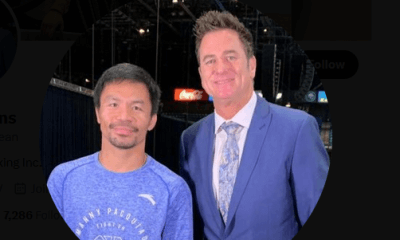
 Featured Articles2 weeks ago
Featured Articles2 weeks agoFrom the Boondocks to the Big Time, The Wild Saga of Manny Pacquiao’s Sidekick Sean Gibbons


